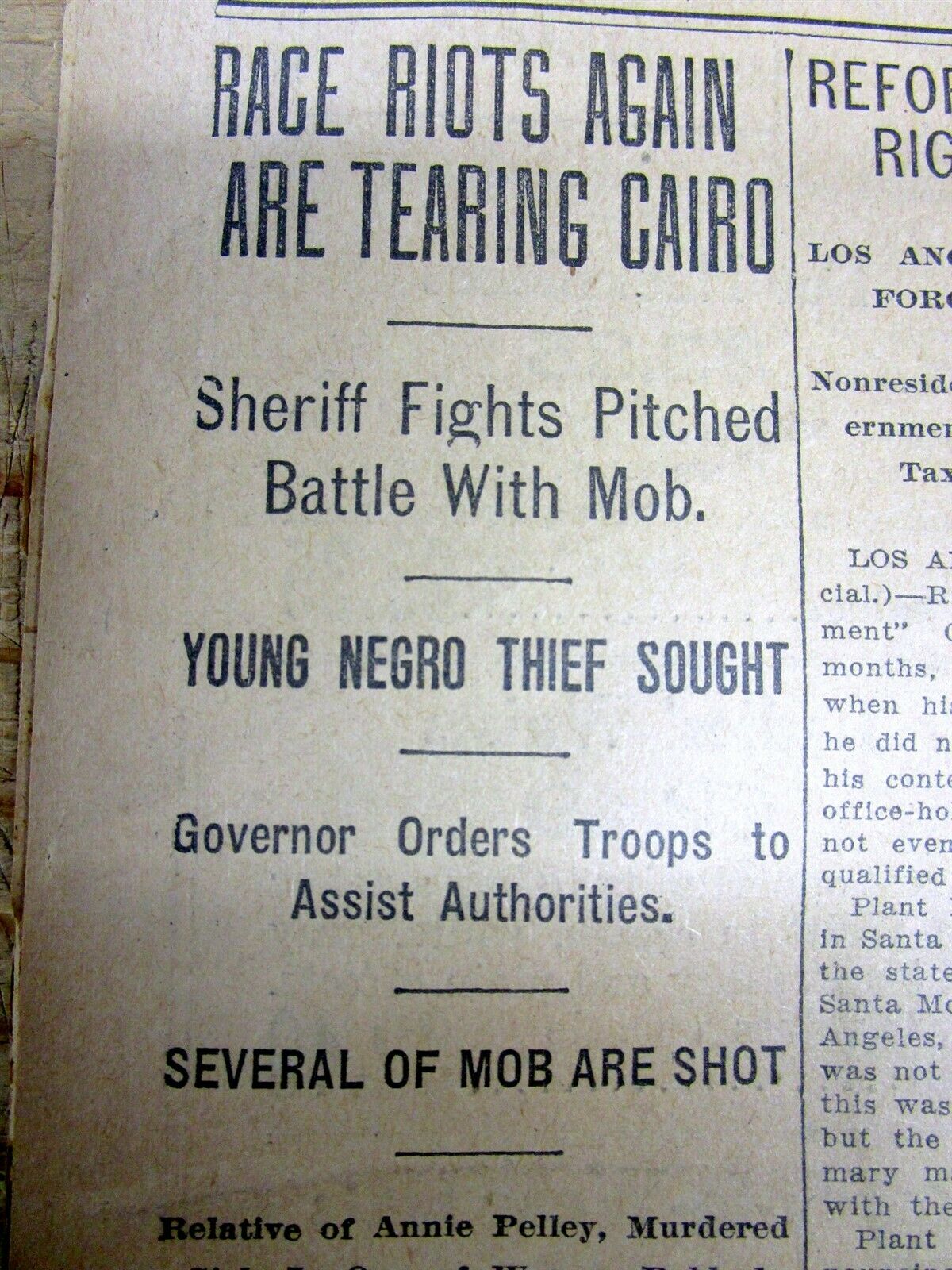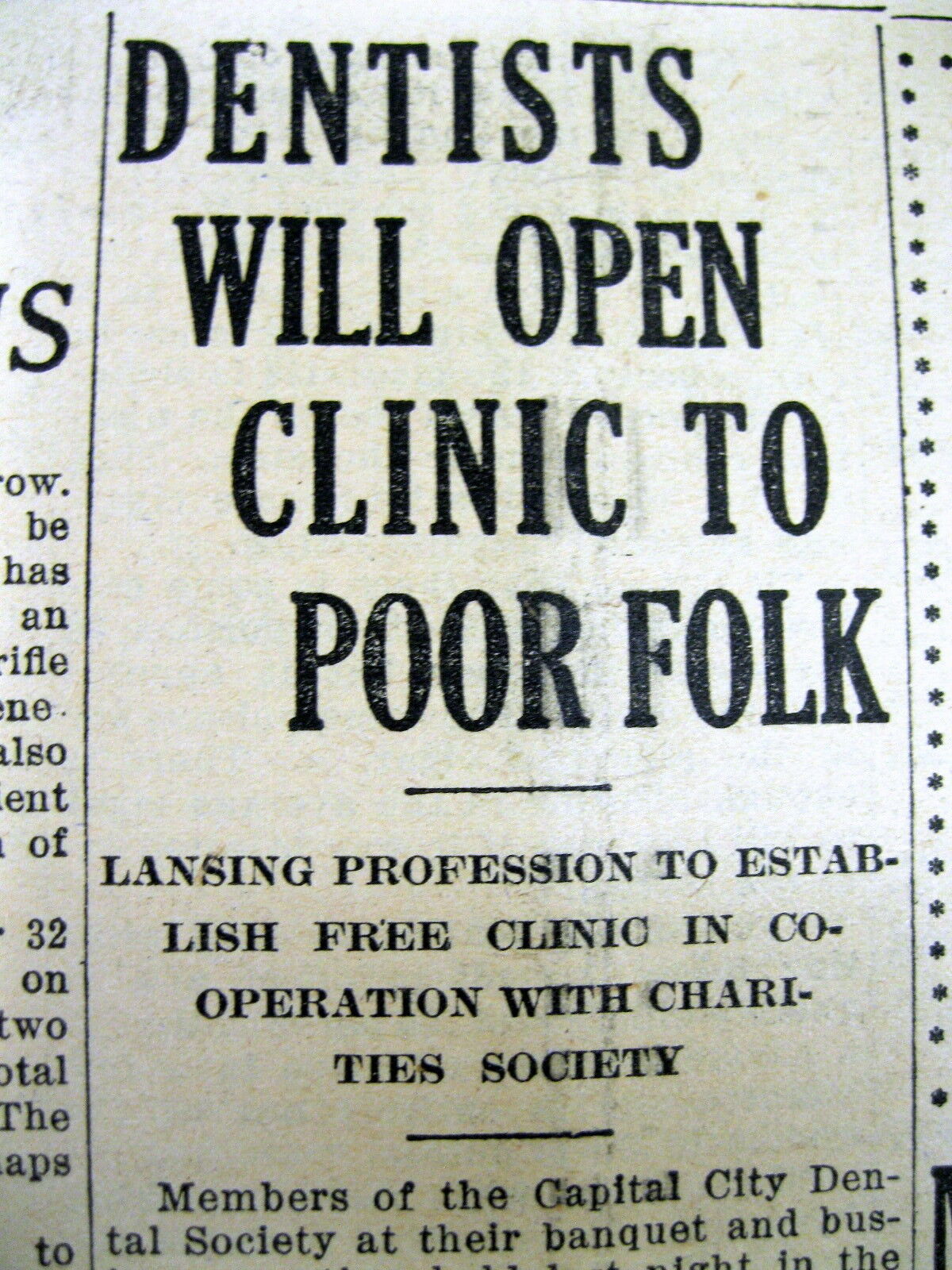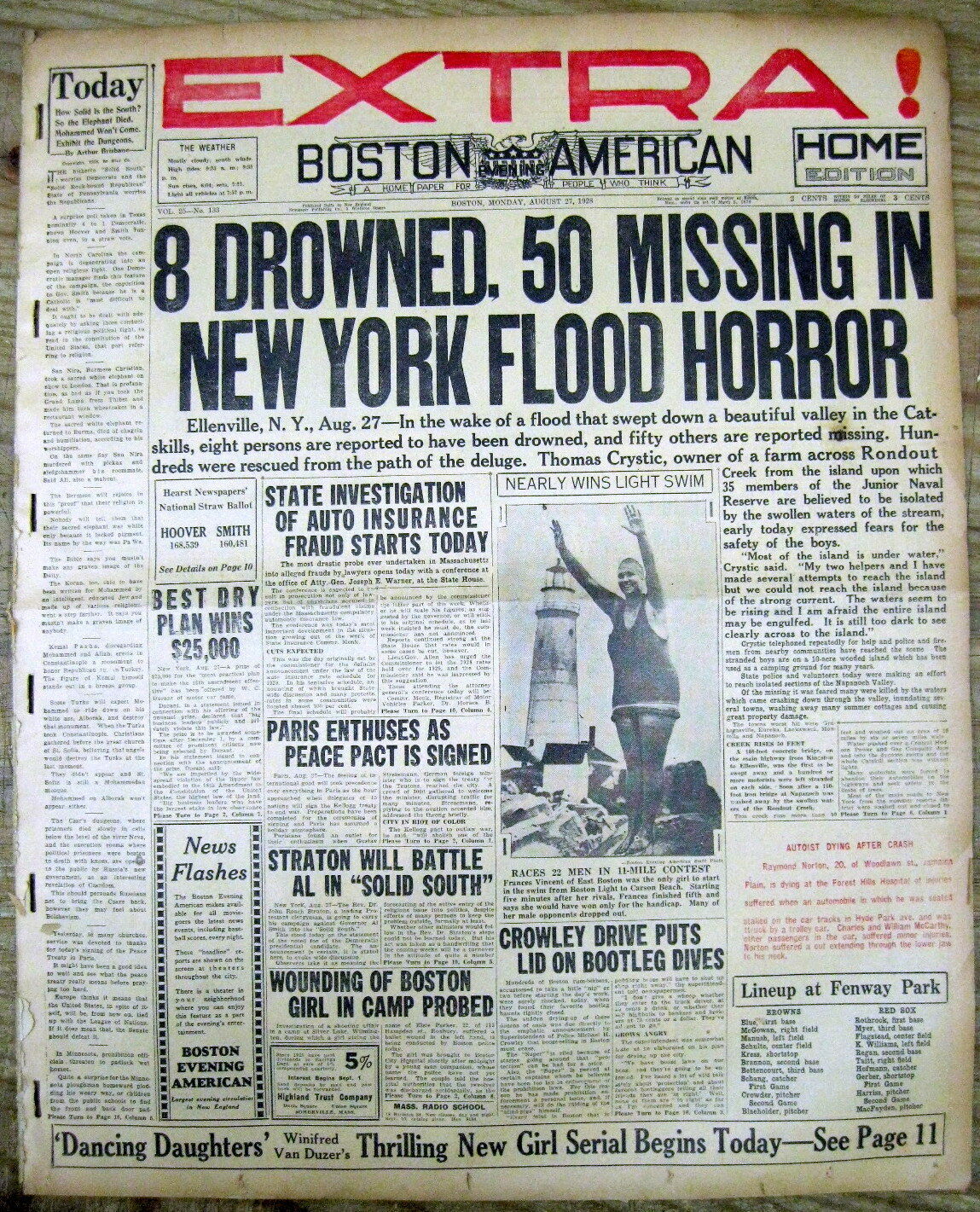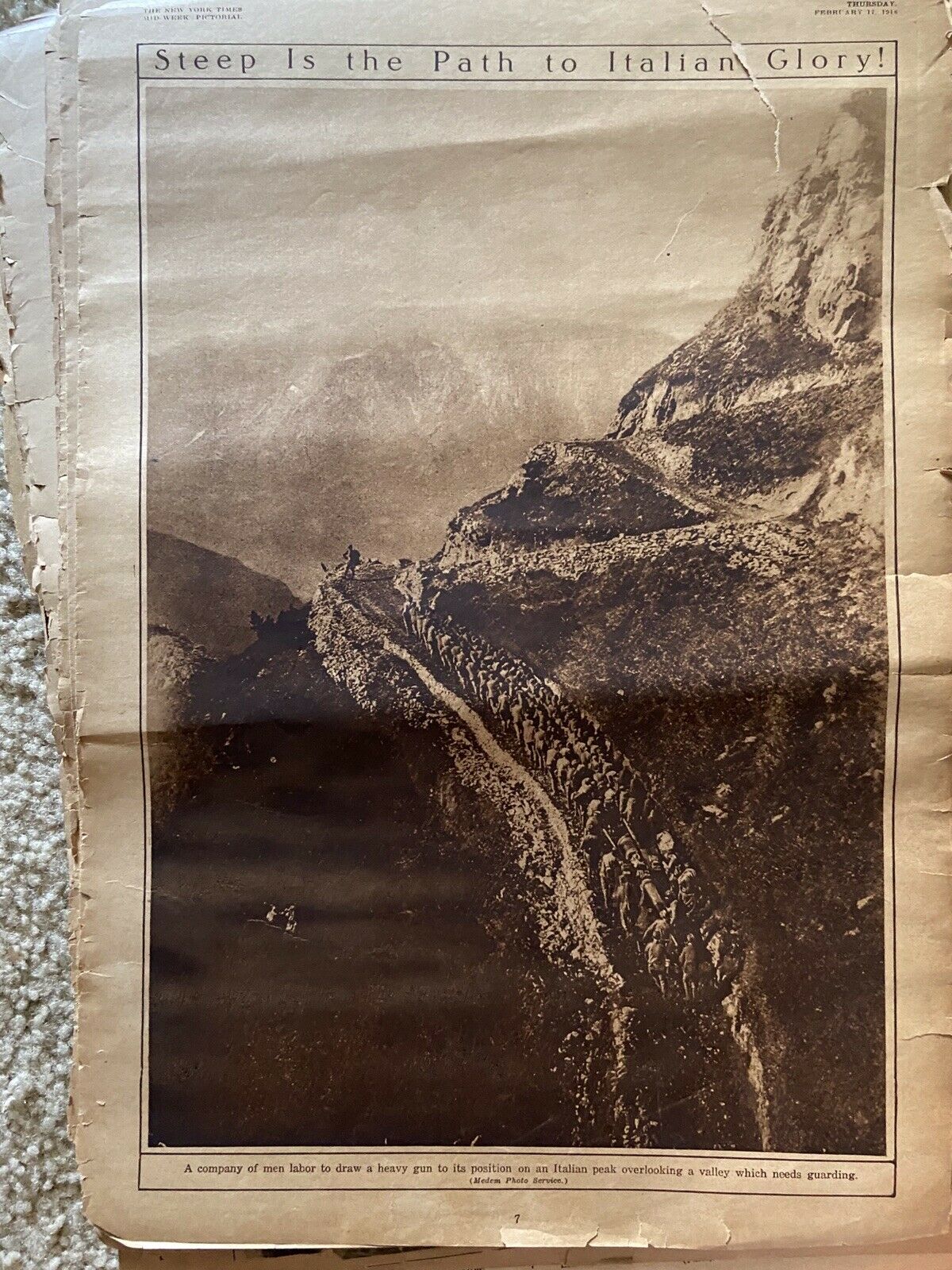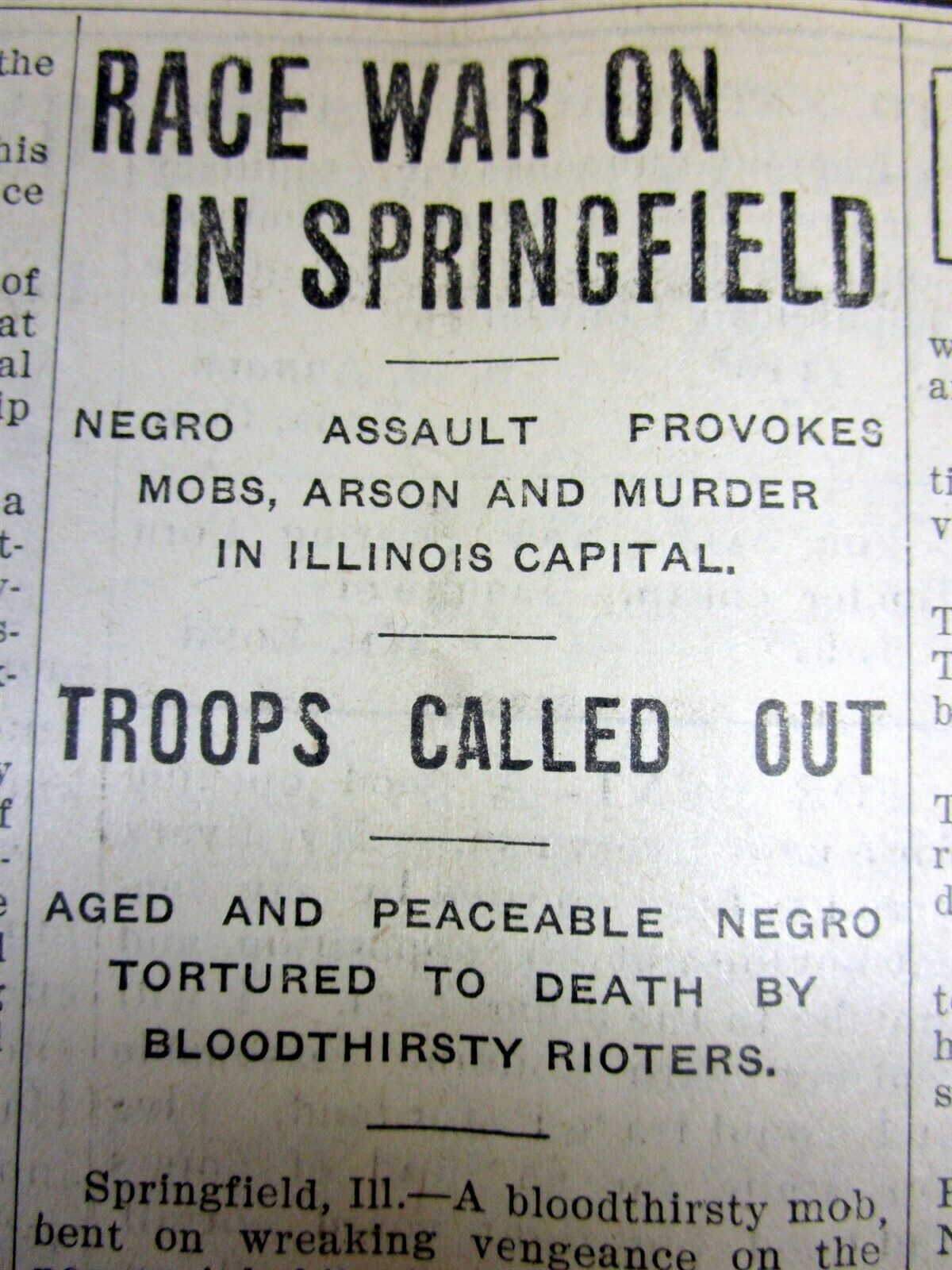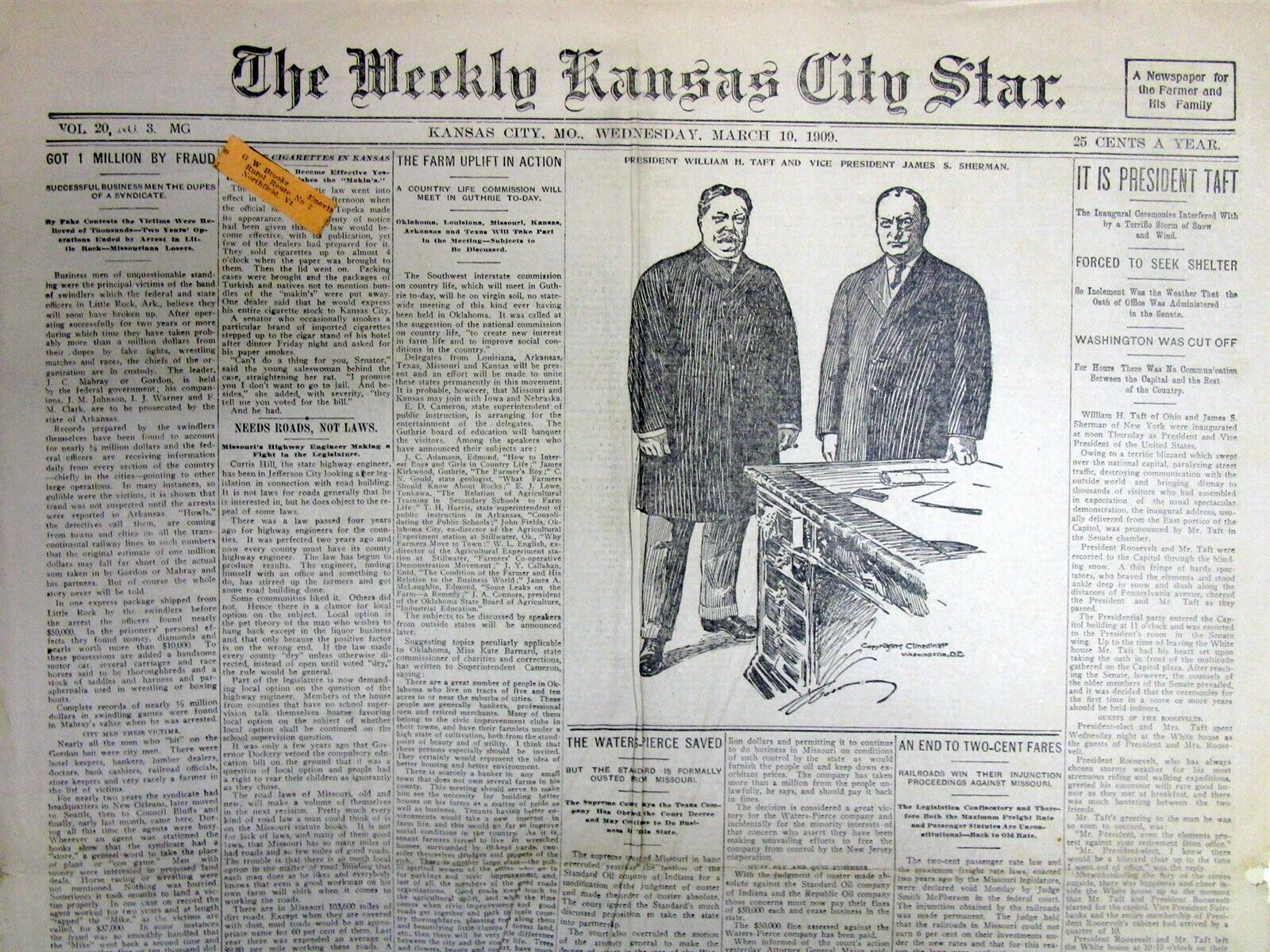-40%
1910 newspaper RACE RIOT in CAIRO Illinois between Whites & African-Americans
$ 15.83
- Description
- Size Guide
Description
1910 newspaper RACE RIOT in CAIRO Illinois between Whites & African-Americans1910 newspaper RACE RIOT in CAIRO Illinois between Whites & African-Americans
- inv # 3H-216
Please visit our
EBAY STORE
for THOUSANDS MORE HISTORICAL NEWSPAPERS for SALE or at auction
SEE PHOTO(s) - COMPLETE ORIGINAL NEWSPAPER, the
Morning Oregonian
(Portland, OR) dated Feb 18, 1910. This original newspaper contains prominent front page 'stacked" headings with long detailed coverage of a large
RACE RIOT in CAIRO, Illinois
.
Cairo is the southernmost city in the U.S. state of Illinois, and is the county seat of Alexander County. Cairo is located at the confluence of the Ohio and Mississippi rivers. Fort Defiance, a Civil War camp, was built at the confluence in 1862 by Union General Ulysses S. Grant to control strategic access to the river. Cairo has the lowest elevation of any location in Illinois and is the only Illinois city to be surrounded by levees. It is in the area of Southern Illinois known as Little Egypt.
Cairo's turbulent history of race relations is marked by the 1909 spectacle lynching of black resident William James. In 1900, Cairo had a population of nearly 13,000. Of that total, approximately 5,000 residents were African-American, or 38 percent. In 1900, this was an unusually high black population for a town of Cairo's size in the North. Five percent of all black residents in the state of Illinois lived here. Later in the early 20th century, Chicago became the center of black life in the state, as it was the destination of tens of thousands of migrants during the Great Migration.
The Illinois constitution of 1818 allowed for limited slavery in the salt mines and allowed current slave owners to retain their slaves. The General Assembly also passed legislation that severely curtailed the rights of free blacks residing in the state and discouraged the migration of free blacks. If a black person was unable to present proof of their freedom they could be fined or sold by the sheriff to the highest bidder. Not long after the passage of the constitution, the state's general assembly adopted a pro-slavery resolution that announced its approval of slavery in slave-holding states and at the same time condemned the formation of abolition societies within Illinois’ boundaries.
Although blacks comprised a large proportion of the Cairo population, they were frequently discriminated against in jobs and housing. Race relations were strained in 1900.[17] The state passed an anti-lynching law in 1905.
On the night of November 11, 1909, two men were lynched. The first was William James, an African American accused of the murder of Anna Pelly, a young white woman killed three days earlier, although there was no physical or circumstantial evidence connecting him to the crime. The second man lynched was Henry Salzner, a white man who had allegedly murdered his wife the previous August.
James was accused of killing Pelly by choking her to death in an alley with pieces of a flour sack on the evening of November 8, 1909. Pelly's body was discovered the next morning. Police believed that James was large enough to have committed the crime, especially as there were rumors of an accomplice. James was placed in police custody on Tuesday, where he remained until Wednesday evening. No physical evidence linked him to the crime. As word of the crime spread, whites in Cairo demanded an immediate trial of James, but the case was delayed by the court. The white townspeople grew infuriated by the delay in a speedy trial, and the threat of mob violence quickly developed. On November 10, Sheriff Frank E. Davis arranged to take James out of the city jail on an Illinois Central train to avoid mob violence.
But the increasingly large mob in Cairo learned of this and seized another train, racing to catch up with the sheriff and James. Sheriff Davis' attempt to save James from the mob proved futile when the mob intercepted Davis and his prisoner. The mob returned James to Cairo and took him to the intersection of Commercial Avenue and Eighth Street. Approximately 10,000 people had gathered for a spectacle lynching as the leaders attempted to hang James from large steel arches that spanned the intersection. The rope broke and James survived the hanging, but members of the armed mob shot him more than 500 times, killing him. The mob dragged James' body to the scene of Pelly's murder. His head was cut from his body and displayed on a pole that was stuck into the ground, and his body was burned.
Hundreds of townspeople conducted a search for the alleged accomplice, Arthur Alexander. Unable to locate him and still bloodthirsty, they entered the court house jail and broke into the cell where Henry Salzner was being held. The mob hanged Salzner from a telegraph pole near the courthouse, and the crowd shot his body many times. After hanging Salzner, the mob continued searching for Alexander long into the night. Police and sheriff deputies located Alexander before the mob did, and they took him to the county jail disguised as a police officer. Some newspapers mistakenly reported that he was lynched.
The mob continued to search for Alexander, also threatening the mayor and chief of police, who were guarded in their homes by more police against the mob. Governor Charles S. Deneen of Illinois dispatched 11 companies of militia to Cairo to suppress the violence. By the time the mob discovered the next morning that Alexander was held at the jail, the soldiers had arrived and prevented further violence.
A group of civil rights activists in Chicago hired journalist Ida B. Wells to investigate the lynchings. After the residents had calmed down, Governor Deneen dismissed Sheriff Davis for failing to protect James and Salzner, and Wells sided with the governor against reinstatement. This was the way he enforced the 1905 anti-lynching law.
Very good condition. This listing includes the complete entire original newspaper, NOT just a clipping or a page of it. STEPHEN A. GOLDMAN HISTORICAL NEWSPAPERS stands behind all of the items that we sell with a no questions asked, money back guarantee. Every item we sell is an original newspaper printed on the date indicated at the beginning of its description. U.S. buyers pay priority mail postage which includes waterproof plastic and a heavy cardboard flat to protect the purchased item from damage in the mail. Upon request by the buyer, we can ship by USPS Media Mail to reduce postage cost; however, please be aware that USPS Media Mail can be very slow in its time of transit to the buyer. International postage is quoted when we are informed as to where the package is to be sent. We do combine postage (to reduce postage costs) for multiple purchases sent in the same package.
We list thousands of rare newspapers with dates from 1570 through 2004 on Ebay each week. This is truly SIX CENTURIES OF HISTORY that YOU CAN OWN!
Stephen A. Goldman Historical Newspapers has been in the business of buying and selling historical newspapers for over 50 years. Dr. Goldman is a consultant to the Freedom Forum Newseum and a member of the American Antiquarian Society. You can buy with confidence from us, knowing that we stand behind all of our historical items with a 100% money back guarantee. Let our 50+ years of experience work for YOU ! We have hundreds of thousands of historical newspapers (and their very early precursors) for sale.
Stephen A. Goldman Historical Newspapers
has been in the business of buying and selling historical newspapers for over 50 years. We are located in the charming Maryland Eastern Shore town of OXFORD, Maryland.
Dr. Goldman is a consultant to the Freedom Forum Newseum and a member of the American Antiquarian Society. You can buy with confidence from us, knowing that we stand behind all of our historical items with a 100% money back guarantee. Let our 50+ years of experience work for YOU ! We have hundreds of thousands of historical newspapers (and their very early precursors) for sale.
We invite customer requests for historical newspapers that are not yet located in our extensive Ebay listing of items. With an inventory of nearly a million historical newspapers (and their early precursors) we are likely have just the one
YOU
are searching for.
WE ARE ALSO ACTIVE BUYERS OF HISTORICAL NEWSPAPERS, including large and small personal collections, bound volumes, significant individual issues, or deaccessions from libraries and historical societies. IF YOU WANT TO SELL, WE WANT TO BUY !!!
Powered by SixBit's eCommerce Solution
